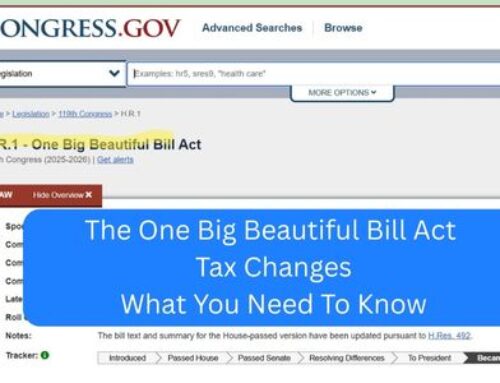Don’t Give Cash To Charity…Do This Instead
Charitable giving is a powerful way to make a positive impact on the world and support causes that matter. For most people, the default method of donating to charities is to give cash. That could be writing a check, making an online payment, or dropping bills into a donation box. Cash donations are straightforward and convenient. However, there are more strategic and effective ways to give that can provide greater value to both the donor and the charity. This article will outline the benefits of gifting appreciated securities, such as stocks or mutual funds, contributing to a Donor Advised Fund (DAF), or using Qualified Charitable Distributions can be alternatives to cash donations. By understanding the advantages of these options, you can maximize your impact and potentially reap significant tax benefits in the process.
Why Gifting Securities Could Be Better
If you have a taxable brokerage account with stocks or index or mutual funds that have increased in value, when you sell them, you’ll have to pay capital gains tax on the increase. If instead you transfer the actual shares to a charity, the charity gets 100% of the value and you don’t pay the tax.
Example:
You have $10,000 of Apple stock that you bought for $2,000. If you sold it, paid the Capital Gains tax (assuming 15%, but for high earners could be 20%) of $1,200, you’d end up with $8,800 to give to the charity. You’d be able to deduct that as a donation. If the charity accepts stock transfers, you’d be able to give the Apple shares and deduct the full $10,000.
I often get asked, but what if I really don’t want to get rid of the Apple shares. If you’ve got the $10,000 and were just planning to write a check, you can still gift the shares. You’d then transfer the $10,000 to your brokerage account and re-buy Apple stock. The costs basis is now $10,000 instead of $2,000 so you when you sell, you’ll save $1,200 in capital gains tax.
Limitations
You may be saying this sounds great, but what are the downsides? The primary difference, that probably won’t affect most people, are the different percentage of AGI you can deduct as outlined on the IRS website (link). With cash donations you can deduct up to 50% of your Adjusted Gross Income (AGI) versus 30% of your AGI if you gift appreciated securities. So, if you’re AGI is $100,000, you can give $50,000 in cash (or via check or credit card) and deduct that in a single year when you itemize your taxes, but you’d be limited to gifting $30,000 in appreciated stock or mutual funds. If you give more than the 50% or 30%, you would be to carry it over and deduct it the next year.
What If The Charity Doesn’t Accept Stock Donations?
While many larger charities do accept the transfer of stock, many smaller ones do not. You can still use this strategy through a Donor-Advised Fund (DAF). A DAF is a private fund administered by a 3rd party (like Schwab or Fidelity) created to manage charitable giving. The individual or family can use this to direct charitable giving when and where they want to. Instead of sending the appreciated stock or mutual fund to a charity you’d transfer it to the DAF.
You can then have the DAF sell the security and use the funds to send a check to the charity. Using a Donor-Advised Fund also allows contributors to break the link between tax deductions and on-going charitable donations. You can then spread donations out over a longer period.
Donor-Advised Funds are qualified 501(c)(3) charities. This allows you to take an immediate tax deduction in the year you contribute.
Donor-Advised Funds do charge an administrative fee. You can find fees for less than 1%. If you are using the DAF to primarily transfer appreciated stock and then distribute it to your charity quickly, you can keep the fees very low.
Donation Bunching
A Donor Advised Fund can also support donation bunching. Because the Tax Cut and Job Act significantly raised the standard deduction, most people no longer itemize their taxes. Even if they do, it’s probably less valuable. With donation bunching, you take 2 or more years of charitable giving and contribute it in a single year to be able to write off more of the donation.
Here’s a simple example:
Married, filing jointly couple has $13,000 worth of non-charitable deductions (mortgage interest and state and local taxes). They also contribute $10,000 per year to charity. They use the standard deduction of $27,700 for 2023 since it’s more than their $23,000 itemized total.
With donation bunching:
Same situation, the couple still have $13,000 in non-charitable deductions. But now they pull forward deductions for the next two years and donate $30,000 to charity using appreciated securities (via a DAF). Their itemized total is $43,000. This is $15,300 higher than the standard deduction. In the 22% tax bracket that’s a savings of $3366. For the next two years, they’d just take the standard deduction.
Using a DAF is especially useful for people contemplating donation stacking (or bunching) allowing them to take a larger tax deduction in a single year, but still giving them you the option to contribute to your charities on an on-going basis. It can also be useful for large-lump sums of money.
If you’re charitably inclined and frustrated by the fact that you haven’t been able to itemize the last few years these strategies could help. This isn’t tax advice so please consult your tax professional or advisor before implementing these strategies. If’ you’d like the Charitable Giving Checklist, click here (link)



